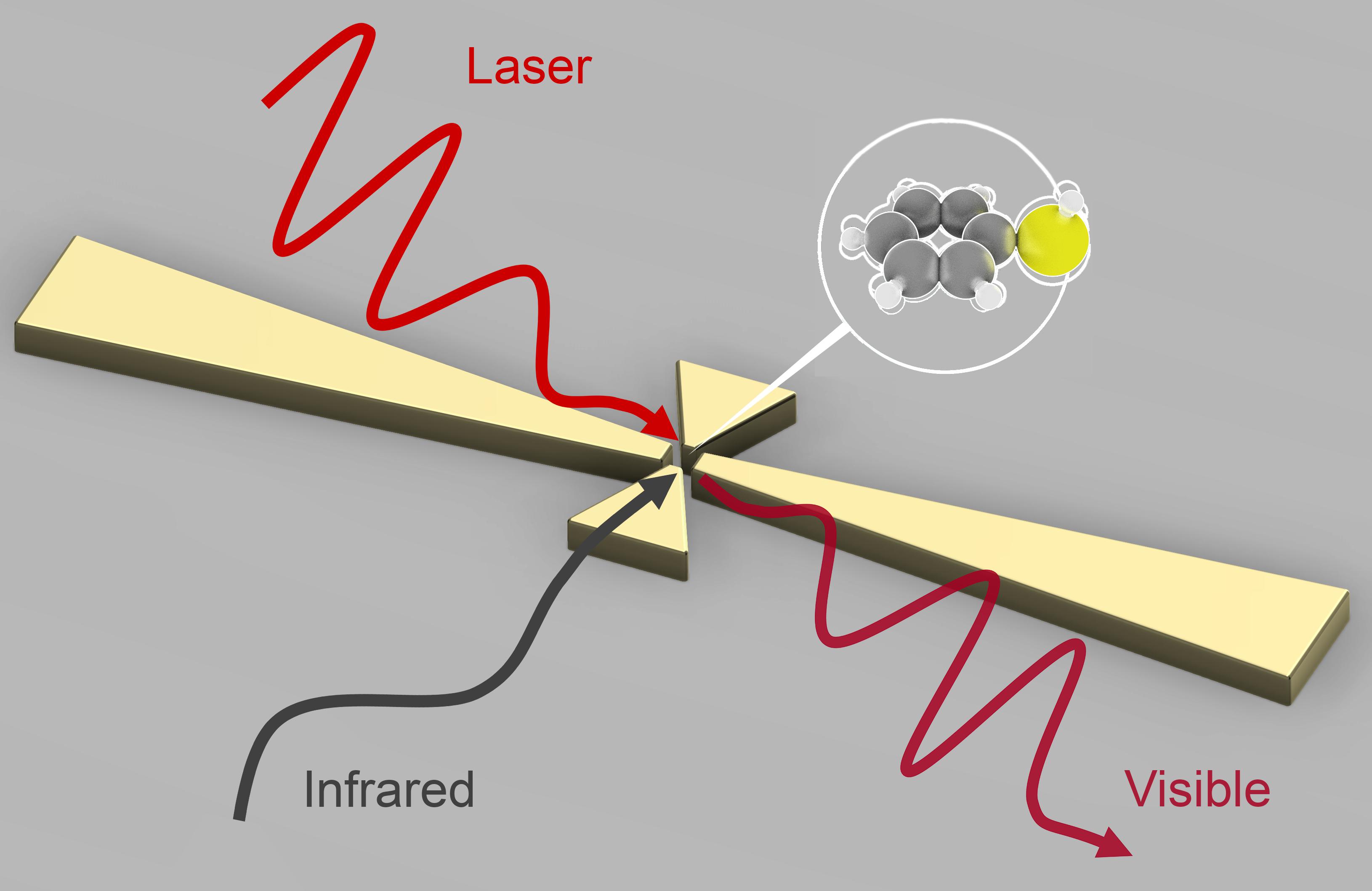Lighting the way to infrared detection

© 2020 EPFL
EPFL physicists propose a new path to detect infrared radiation with outstanding sensitivity, allowing detection of signals as low as that of a single quantum of light.
When using our webcam or cell phone camera, we experience the tremendous capabilities of cheap and compact sensors developed in the past decades for the visible region of the electromagnetic spectrum. On the contrary, detection of lower frequency radiation not visible to the human eye (such as mid- and far-infrared radiation) requires complex and costly equipment. Lack of a compact technology impedes widespread access to sensors for the recognition of molecules and the imaging of thermal radiation naturally emitted by our bodies. A new conceptual breakthrough in this field may therefore have tremendous impacts in our daily lives.
The most popular technique currently available to detect mid- and far-infrared radiation consists in bolometers, which are made up of arrays of small thermometers measuring the heat produced by absorption of radiation. They have many limitations, in particular being slow to respond and unable to detect weak levels of radiation.
The novel approach proposed by the EPFL team led by Christophe Galland and Tobias Kippenberg follows a completely different route: first convert the invisible radiation into visible light, and then detect it with existing technologies. At the core of the new concept lie hybrid metal-molecule nanostructures. The metal is tailored to focus infrared radiation on the molecules, which are thereby brought into vibration. Next, the energy of the vibrating molecules is converted again into radiation, but this time at a much higher frequency, in the visible domain. The hybrid nanostructure, designed in collaboration with Diego Martin-Cano (Max-Planck Institute for Light, Erlangen, Germany), allows for high conversion efficiency while reducing the size of the device to dimensions significantly smaller than the wavelength of the infrared light.

Philippe Roelli, lead author on the study, highlights that, among the various conceptual advances envisioned by their scheme, the most intriguing aspect concerns its potential sensitivity: ‘The low level of noise added by the molecular vibration during the conversion process enables the detection of extremely weak signals at room temperature. With advanced devices, we anticipate to reach quantum limited conversion and have the unique opportunity to resolve the signal of single quanta of infrared light’.
The EPFL study will inspire future works at the interface between surface science, nanotechnology and quantum optics to foster the development of novel devices with applications in infrared sensing and imaging.
European Union’s Horizon 2020 research and innovation programme (HOT and THOR)
Swiss National Science Foundation
Max Planck Society
Philippe Roelli, Diego Martin-Cano, Tobias J. Kippenberg, Christophe Galland. Molecular platform for frequency upconversion at the single-photon level. Physical Review X, September 14, 2020. DOI: 10.1103/PhysRevx.10.031054